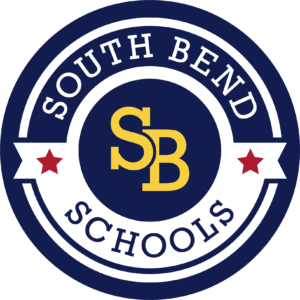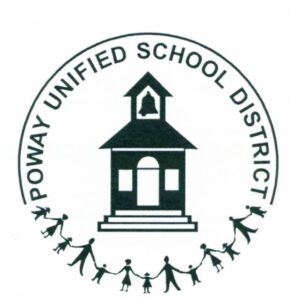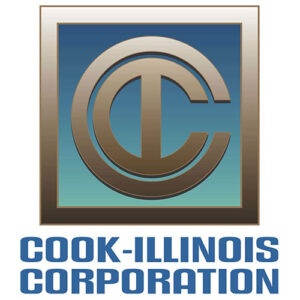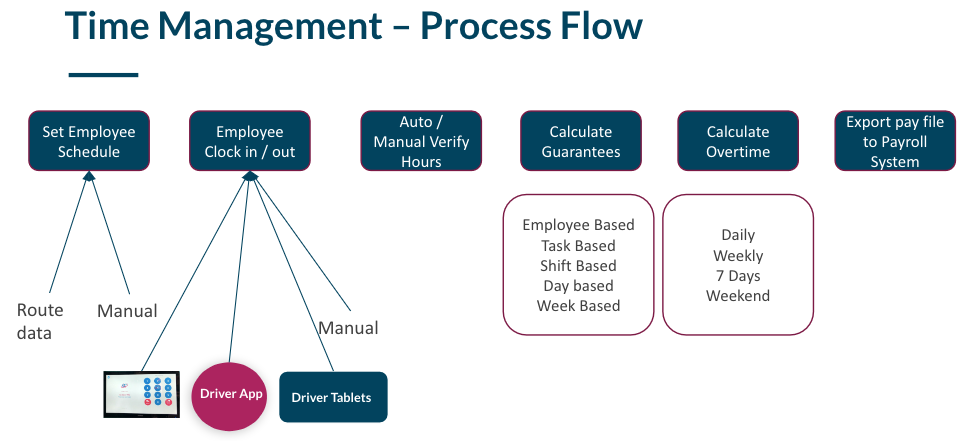2 + 2 = 5
Say goodbye to independent technology silos that don’t communicate or deliver an integrated experience.
And say hello to a comprehensive view of your operations, payroll and communications that transforms your daily operations.
Our School Bus Operating platform arms your team with the information they need to improve decision making around safety, reducing costs, and being more efficient each day.
Trusted by dozens of public and private student transportation fleets to improve how they do business.
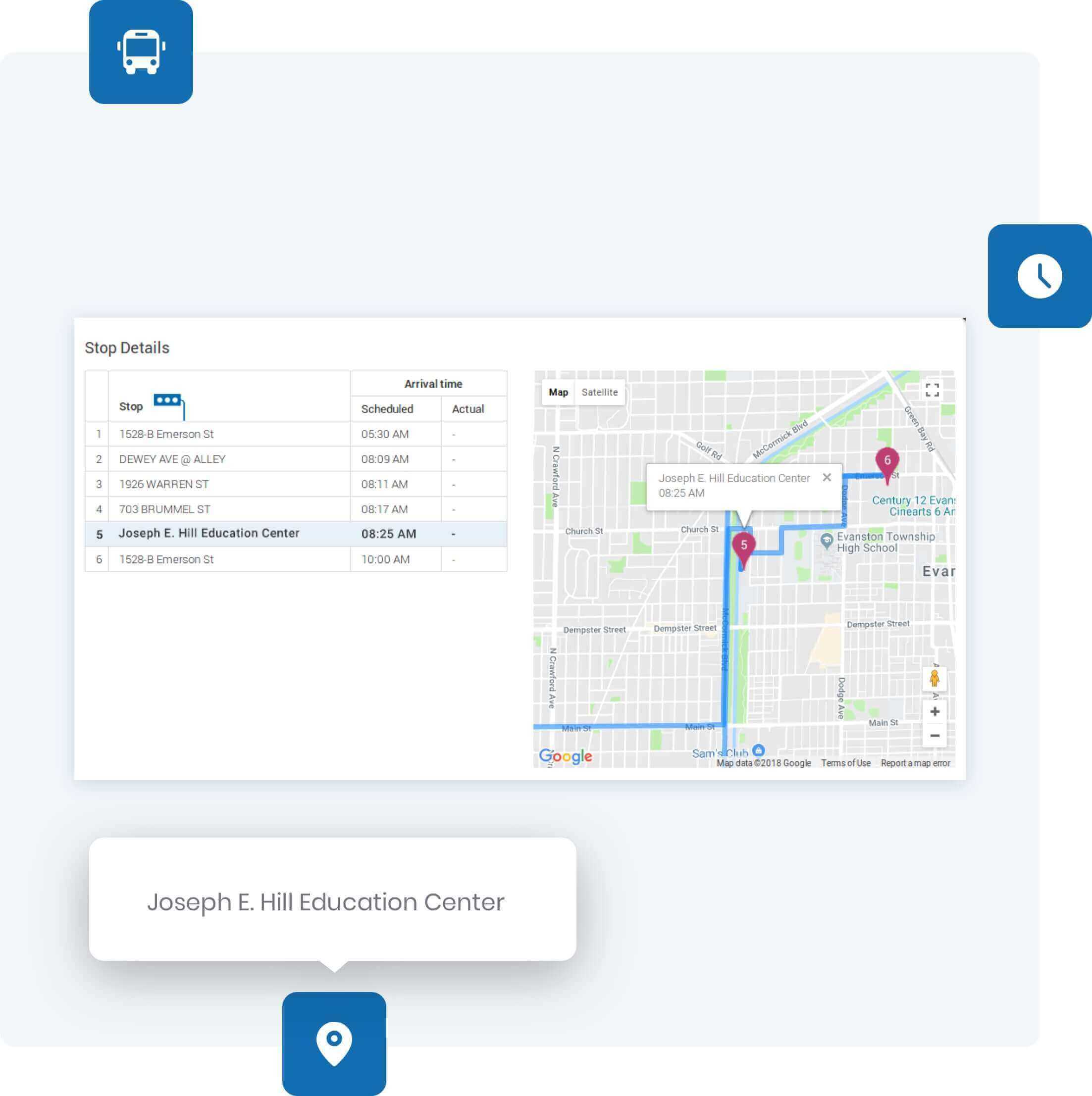
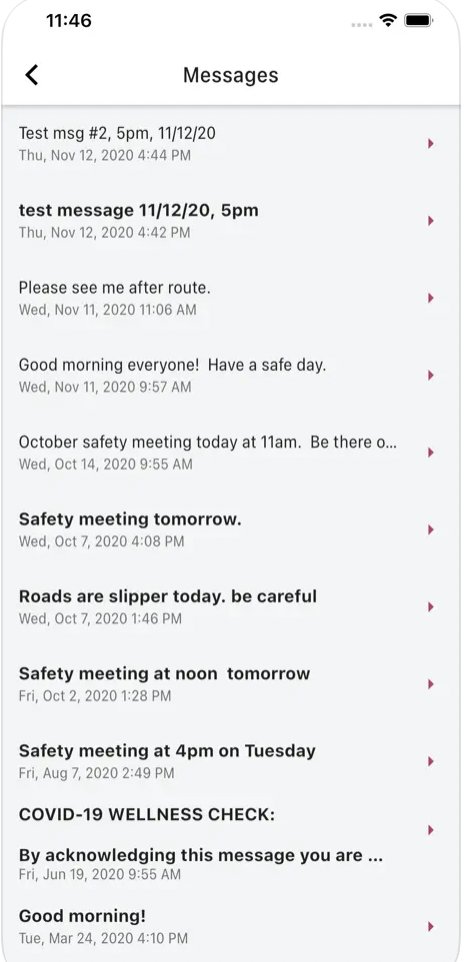
ByteCurve360 enables transportation organizations to improve safety and operational efficiency by merging routing and GPS fleet tracking data into a comprehensive management tool.
Task drivers, reassign routes and verify payroll in seconds.
Better manage late/absent drivers and deliver on-time performance your students depend on.
Trusted by the Finest Names in School Bus Transportation
Many, if not most, larger school districts and private school bus fleets rely on GPS Fleet Tracking today, as well as routing software, to improve their operations and deliver greater student safety.
But many districts are still unaware of a new emerging technology designed to connect the two previously independent platforms into a 360 degree view of operations to empower dispatchers, payroll technicians and fleet directors to capture even better operational efficiencies and uncover new ways to increase safety.
Bytecurve360, developed and supported by a team with more than 100 years of combined student transportation experience, is growing in popularity among fleets who leverage both routing and GPS Fleet tracking thanks to its ability to improve driver management, better control costs associated with payroll and deliver improved services to schools and families.
Not designed to replace either system, Bytecurve360 aims to connect dots that were previously constrained by technology silos into a more comprehensive perspective of student transportation management.
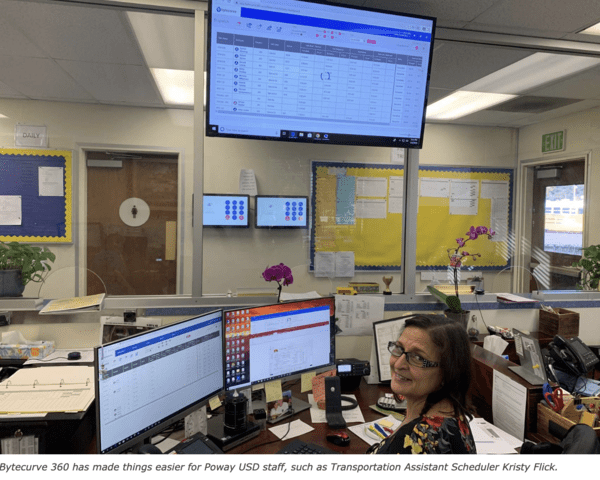
Bytecurve360 delivers a transformative operational experience.
Featuring a driver communication app, a payroll tool that can be leveraged in the garage via desktop or on- the-go via the driver app DriveOn as well as dispatch features designed by a team with years of experience managing complex and dynamic school bus fleets, Bytecurve360 delivers a transformative operational experience.
“It’s helped us provide a new level of command and control that allows us to be ahead of issues instead of responding to them,” said Marty Klukas, General Manager, Student Transit.
What are the key features of school bus routing software?
A typical school bus routing software comes complete with more or less six main features:
- Easier Management of daily operations, including assigning/reassigning drivers and vehicles, using real-time integration with GPS and routing systems. This allows all stops to easily be rerouted when a bus breaks down or a driver can’t come in.
- Fewer complaints from parents
- Better Driver communications so that employees can check in/out remotely, view their schedules and receive messages on their smartphones.
- Spend less time managing drivers.
- Easier payroll management so that you no longer have to manually calculate employee guarantees/contracts and overtime.
- Less payroll mistakes.
A school bus GPS tracking system is an innovative technology that lets school districts proactively monitor the real-time location of their buses.
The system leverages GPS devices, which are installed on the buses and can then transmit data about bus locations, motors along with other relevant metrics to a central server.
School bus GPS tracking technology is well-noted for serving a number of useful and valuable functions.
First, such systems enable school districts to keep track of the location of their buses in real time. This makes sure they are always in a position of monitoring the bus movements and responding rapidly to any issues that occur.
Second, GPS tracking solutions enable school districts to optimize bus routes and schedules, which can result in cost savings and efficiency improvements.
Third, a school bus GPS tracking system can be invaluable in helping improve student safety while on the bus. This is simply through its ability to help school districts in the monitoring of speed and location of buses and then take corrective action whenever necessary.
Fourth, GPS technology can be leveraged to establish communication links between school officials, drivers, students, and parents, and can deliver real-time notifications about bus locations, and schedules.
Lastly, these systems may also be utilized to keep track of maintenance schedules and even monitor school bus performance.
This ensures that the fleet remains well-maintained and always operates efficiently and optimally.
School bus GPS tracking systems are essential tools for school districts.
They ensure that the monitoring and management of their bus fleets are more effective, which guarantees the safety and well-being of the students.
Integrated Student Transportation Software
What are the key features of a school bus GPS tracking solution?
- The real-time tracking feature leverages satellite technology to deliver real-time information about the exact location of school buses. This data is then relayed to a cloud-based server where it’s translated into easy-to-read software, where school staff may access it. Real-time tracking works seamlessly with other features including route optimization, safety monitoring, and communication capabilities. Bytecurve leverages this information and links it with payroll data to ensure drivers are being compensated appropriately.
- The route optimization feature utilizes the data gathered by the real-time tracking feature to help school districts optimize their bus routes and schedules. The utilization of this feature is acclaimed for its ability to cut down travel time and fuel costs. While also making sure students arrive at school on time. The route optimization feature works in tandem with real-time tracking and the communication features to deliver real-time notifications to drivers and school officials about any route changes or delays. Bytecurve leverages routing data to find routes that can be re-designed, or sometimes scrapped and replaced, to help districts find new ways to save time and money.
- GPS technology is used to monitor driver behavior like speeding or harsh braking and immediately notifies school staff if any safety issues take place. Excessive idling is also a significant challenge for school bus fleets to conserve costly fuel, and GPS Fleet Tracking solutions are ideal tools to monitor idling and coach drivers on best practices.
- A school bus GPS tracking system may be configured to keep track of student ridership, which allows school officials to monitor which students are on which buses. This student tracking feature can make sure students are getting on and off at the right stops. It may also assist in identifying any concerns with student behavior on the bus. More districts are adopting student ridership not only to increase safety and parent communication, but also for reimbursements from state and federal governments associated with transporting students with disabilities.
- GPS technology can facilitate seamless communication between school staff, drivers, students, and parents. This feature enables school officials to dispatch real-time alerts on bus locations and schedules and also emergency alerts in the event of any safety concern. The Bytecurve driver app goes one step further by allowing drivers to clock-in and clock-out with to-the-minute precision so your payroll isn’t overcompensating drivers for incidental hours.
What are the major needs that school bus GPS tracking solutions meet well when compared to alternatives?
- GPS tracking systems deliver real-time monitoring of school buses. This allows school staff to efficiently keep track of the location and status of their bus fleets all the time. This is a huge advantage over most other alternative solutions in the market, including radio communication, RFID tracking, barcode scanning, etc.
- A school bus GPS tracking solution can help optimize bus routes based on real-time data. This enables school districts to save time and money by cutting down travel distance and fuel costs. It is important to mention that this functionality isn’t feasible with all solutions. Bytecurve offers seamless integration with all of the major providers of GPS Fleet Tracking, including Samsara, CalAmp/Synovia and Zonar.
- These systems can help monitor driver behavior and they notify school officials in the event of any safety issue. This feature goes a long way in averting accidents and ensuring the safety of students while on the bus. This is especially helpful when substitutes, teachers or other administrators are driving the shorter buses that don’t require a special license for sports, field trips or other extracurricular activities. The system never sleeps, ensuring your vehicles are safe on weekends and well after normal school hours.
- School bus GPS tracking applications can be used to keep track of student ridership. This ensures that students get on and off at suitable stops. Also, it might be utilized to help school staff identify issues with student behavior on the bus. Student ridership is a powerful tool to connect parents with their children’s bus and is especially useful to protect elementary school aged children as well as students with special needs.
- GPS tracking solutions can facilitate seamless communication between school officials, drivers, students, and parents. To this end, they are designed to deliver real-time alerts on bus locations and schedules at all times.
Let’s take a look at the pros and cons of school bus GPS tracking solutions from the perspective of all stakeholders.
School staff pros
- Real-time monitoring of bus location and status, which enables rapid response to any issue that might arise.
- Route optimization which reduces travel distance and fuel costs.
- Safety monitoring of driver behavior and providing alerts on any safety concerns.
- Student tracking ensures accurate data on student ridership and behavior.
- Communication features that let school officials dispatch real-time alerts to drivers, students, and parents.
School staff cons
- Up front investment in installing and maintaining the system.
- Training new staff on the system
- Potential for privacy concerns when the system isn’t implemented transparently.
Driver pros
- Real-time monitoring of bus location and status, which provides support for any problem that might arise on the road.
- Safety monitoring helps drivers improve their driving behavior and avoid accidents.
- Communication features allow drivers to receive real-time updates on routes, schedules, and safety notifications.
Driver cons
- Potential for increased scrutiny of driver behavior.
- Pressure to abide by optimized routes and schedules, which might not always be practical.
Parents pros
- Real-time monitoring of bus location and status delivers peace of mind and ensures children are safe.
- Communication features enable parents to receive real-time notifications on bus locations and schedules.
- The student tracking feature delivers accurate data on student ridership and behavior.
Parents cons
- Potential for increased pressure to ensure children are on the bus at the right time and the right stop.
Student pros
- Enhanced security on the bus due to safety monitoring and real-time monitoring of bus location and status.
- Accurate data on student ridership and behavior, helps school staff determine issues and improve safety.
- The communication features allow students to receive alerts on bus locations and schedules.
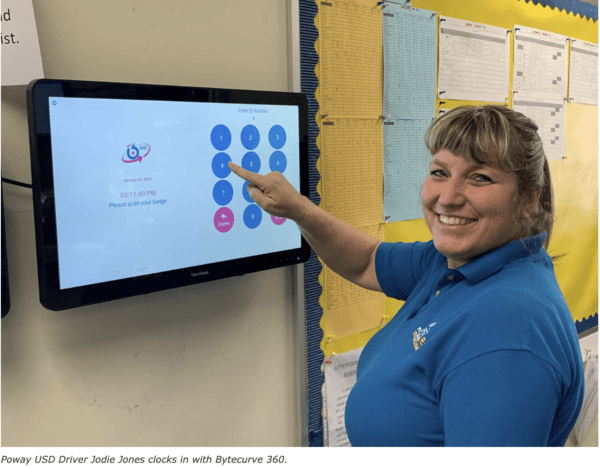
What to look for in a school bus scheduling software
School officials need to assess how such a system collects and stores data and make sure it fully complies with the relevant data privacy regulations.
School districts should also establish clear policies and processes around data access and utilization.
School staff should communicate openly with all stakeholders about the purpose and implementation of GPS tracking systems.
School officials should take all the time they need to appraise the installation and maintenance costs of the school bus GPS tracking solution they pick together with any ongoing subscription or licensing costs.
Overall, they should make sure that the system they eventually choose delivers a good ROI and aligns with their budget.
School officials should figure out the ease of use and accessibility of the systems they are considering.
They should also be on the lookout for comprehensive customer support and training provided by the vendors.
And schools must consider if their GPS Fleet Tracking system will integrate with other software solutions, Iike Bytecurve, that can deliver added value and new opportunities to save time and money while increasing student safety.
Conclusion
School bus scheduling software like Bytecurve have significantly transformed the management of school bus transportation operations.
With their powerful features including route planning and real-time GPS tracking integrations, automated scheduling, and efficient communication capabilities, these systems address the critical needs of school districts including student safety, operational efficiency, parental satisfaction, and compliance.
One of the primary benefits of these apps is their ability to streamline route planning and optimization.
With sophisticated algorithms, these tools take into consideration diverse variables such as student locations, traffic conditions, and time constraints to create the most efficient school bus routes.
This not only minimizes travel time and fuel consumption, but maximizes the utilization of resources including the drivers and buses. By optimizing routes, schools can operate more cost-effectively. While at the same time decreasing the environmental impact of transportation.
School bus scheduling software serve as powerful tools for school districts, and provide a variety of functions that optimize bus transportation operations.
By leveraging functionality such as route planning and optimization, automated scheduling, real-time tracking, and effective communication, schools may improve safety, efficiency and meet the evolving needs of students, parents, and the transportation staff.
It is important to note that the capability to monitor bus locations in real-time, in particular, delivers a sense of security for all stakeholders.
Additionally, some of the finest instances of these systems provide robust reporting and analytics functionalities.
By generating exhaustive reports on bus operations, route efficiency, on-time performance, and student attendance, schools can gain precious insights. These insights can help determine areas for improvement, optimize the allocation of resources, and comply with regulatory requirements.
Data-driven decision-making enables schools to continually improve their transportation systems, which ensures they operate at peak efficiency and always adhere to safety standards.
While there are some potential drawbacks to implementing these solutions, their benefits far outweigh their shortcomings. When picking a school bus scheduling software, be on the lookout for user-friendliness, customization options, integration capabilities, mobile accessibility, robust reporting, data security, scalability, and dependable customer support.
By implementing the best school bus scheduling software, schools can optimize their bus transportation operations and ensure the safety, satisfaction, and utmost convenience of both students and their parents.

Secure
Only authorized employees will be able to access DriveOn based on a customer specific access code. This code can be turned off as needed by an authorized administrator.

User friendly
DriveOn is easy to use with a simple, smart interface.
Available on both iOS and Google Play stores.



